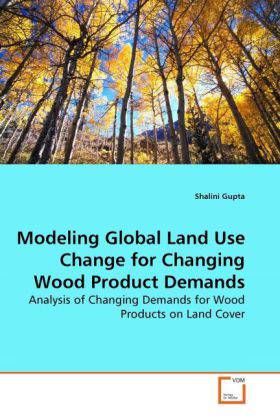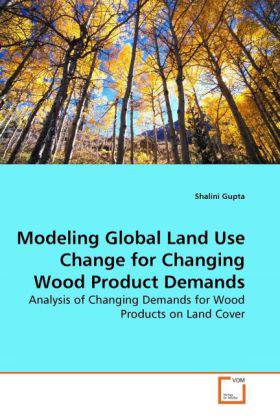
Je cadeautjes zeker op tijd in huis hebben voor de feestdagen? Kom langs in onze winkels en vind het perfecte geschenk!
- Afhalen na 1 uur in een winkel met voorraad
- Gratis thuislevering in België vanaf € 30
- Ruim aanbod met 7 miljoen producten
Je cadeautjes zeker op tijd in huis hebben voor de feestdagen? Kom langs in onze winkels en vind het perfecte geschenk!
- Afhalen na 1 uur in een winkel met voorraad
- Gratis thuislevering in België vanaf € 30
- Ruim aanbod met 7 miljoen producten
Zoeken
Modeling Global Land Use Change for Changing Wood Product Demands
Analysis of Changing Demands for Wood Products on Land Cover
Shalini Gupta
Paperback | Engels
€ 70,45
+ 140 punten
Omschrijving
The 21st century has brought new challenges for forest management at a time when globalization in world trade is increasing and global climate change is becoming increasingly apparent. The challenging question is how can the global demands for forest commodities be satisfied in an increasingly globalised economy, and where could they potentially be produced? For this purpose, wood demand estimates need to be integrated in a framework, which is able to adequately handle competition for land between major land-use options. Accordingly, the following neuralgic points for research have been identified: (1) a review of existing global-scale economic forest sector models (2) simulation of global wood production under selected scenarios (3) simulation of global vegetation carbon yields and (4) the implementation of a land-use allocation procedure to simulate the impact of wood extraction on forest land-cover. The entire methodology is applied in an exemplary scenario analysis for India.
Specificaties
Betrokkenen
- Auteur(s):
- Uitgeverij:
Inhoud
- Aantal bladzijden:
- 124
- Taal:
- Engels
Eigenschappen
- Productcode (EAN):
- 9783639261653
- Verschijningsdatum:
- 11/06/2010
- Uitvoering:
- Paperback
- Afmetingen:
- 152 mm x 229 mm
- Gewicht:
- 191 g

Alleen bij Standaard Boekhandel
+ 140 punten op je klantenkaart van Standaard Boekhandel
Beoordelingen
We publiceren alleen reviews die voldoen aan de voorwaarden voor reviews. Bekijk onze voorwaarden voor reviews.









